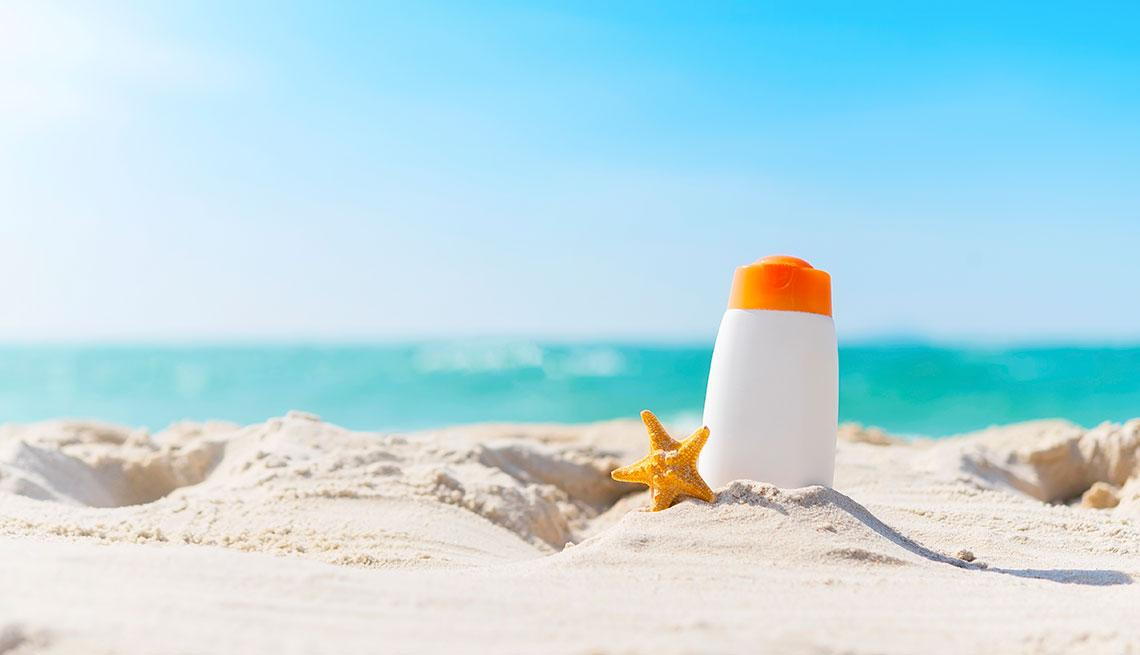
Who doesn't love to spend summer days relaxing by the pool, biking beautiful trails, or playing outside with your kids? For many though, concerns over sun safety, especially when it comes to skin cancer, can keep many people indoors and out of the sun. I've seen and heard a lot of concerns and confusion over the conflicting information "out there" so today we are walking you through some of the misconceptions, benefits, and a few tips when you're enjoying your summer fun.
Myth #1- Sun exposure is bad for you.
The "dangers of the sun" have been widely exaggerated by various special-interest groups interested in selling anti-aging cosmetics and other expensive products and specialists so focused on skin health that they fail to take into account overall well-being. The truth is, sun-exposure for most people is a NECESSARY and important process in creating Vitamin D which has an incredible range of health benefits,especially for your heart, bones, and brain. In fact, an estimated 70 - 90% of the US population is deficient in Vitamin D which is linked to heart disease, mood disorders, and osteoporosis! It is true that too much sun at one time can be damaging to your skin however, so precautions should be taken to avoid skin burning or irritation.We will discuss some tips for avoiding sun-damage below.
Myth #2- Skin tanning/darkening indicates sun-damaged tissue.
Not necessarily. Cells in your skin called melanocytes produce melanin in response to UV-light which gives color to your skin (interestingly, all races have similar numbers of melanocytes in their skin... only different levels of melanin production). Melanin helps protect your skin from sun-damage, however like anything, too much exposure to UV- light all-at-once can damage the melanocytes. Increasing anti-oxidant activity in the skin can help prevent and repair melanocyte damage... we will discuss this further below.
Myth #3- I can get all my Vitamin D from my diet (eg: milk).
Unlikely. First off, dairy products and milk don't actually have much naturally occurring Vitamin D, rather synthetic Vitamin D is added which has far lower absorption rates and activity. There are three types of Vitamin D with different levels of absorption and activity. Vitamin D3 which we only get from the sun is the best form of Vitamin D. The next best form is D2 which can be found in animal fats, especially fish such as halibut, carp, and mackerel. You would have to consistently eat a lot of high-quality fish to maintain healthy levels of Vitamin D in your blood.
So how much sun should we be getting?
The USDA recommends getting at least 600 IU of Vitamin D a day (this is the amount needed per day to avoid deficiency symptoms for most people) but in order to reap many of the benefits of Vitamin D, daily doses of 1000 - 10,000 IU are recommended. For lighter-skinned individuals this equates to about 10-20 minutes of mid-day (11am-3pm) summer sun a day. For darker-skinned people this could be closer to 1-hour per day.
The important thing here is to know your body. Pale-skinned people and red haired individuals are extra sensitive to the skin so may only require 10-minutes of sun to reach their Vitamin D limit. Twenty minutes may be too much sun for some people (especially young kids) if their bodies aren't used to it and could result in skin damage. If in doubt, start with 10-minutes a day and work up to 20-minutes. After that, practice safe-sun practices which I have outlined below.
Sun Health Tips:
Tip #1. Set a timer for the amount of time you need to absorb your daily Vitamin D (whether it be 10 minutes or 1-hour).
Tip #2. After that allotted time, you should go inside, cover-up your skin, and/or apply sunscreen to all exposed skin to limit excessive UV-radiation.
Tip #3. Eat your sunscreen! Keep your skin healthy by eating foods rich in sun protecting anti-oxidants such as sweet potatoes, strawberries,tomatoes (think red and orange foods), salmon, avocados, and eggs (think good fats). These can help prevent skin damage from the sun.
Tip #4. ALWAYS choose natural/safe sunscreens! This is HUGE. Most sunscreens contain harsh compounds and toxic chemicals which are then spread all over your body and absorbed through the skin.
Tip #5. Remember, everyone is different. People vary in how much sun they can tolerate, their anti-oxidant defense and ability to repair sun damaged skin, and their genetic susceptibility to skin cancers. It's you and your doctor's job to find the happy-medium for you.
